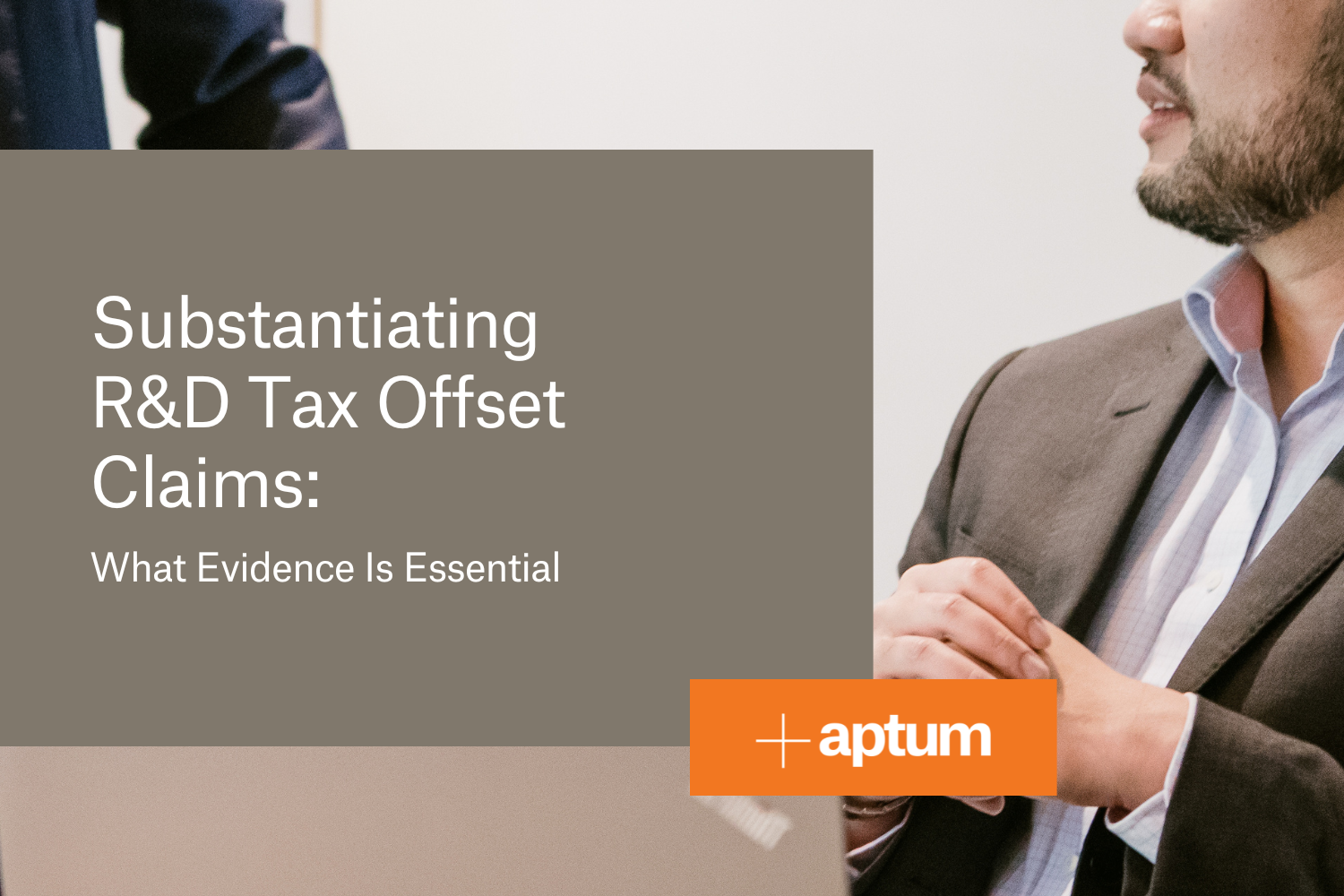The research and development (R&D) tax incentive exists to encourage companies to engage in R&D by providing tax offsets for eligible companies.
But substantiating an R&D tax offset claim can be challenging.
Whilst the legislation on business’ record keeping requirements is general and non-specific, the ATO tends to take the view that businesses must retain specific documents such as reports outlining who was involved in R&D activities, and the time records of the staff involved, to substantiate R&D tax offset claims.
Though as recent disputes challenging the ATO’s position have shown, primary source documents are important, but not essential, to substantiating R&D tax offset claims.
What expenditure is eligible for R&D?
Generally speaking, an eligible R&D entity (predominantly Australian corporations) should be able to deduct expenditure incurred during an income year to the extent that the expenditure is incurred on R&D activities.
These activities must be either “core R&D activities” or “supporting activities”.
Core R&D activities are experimental activities where:
- the outcome cannot be known or determined in advance, based on existing knowledge information or experience;
- the outcome can only be determined by applying principles of established science;
- the progression of work goes from hypothesis to experiment, to observation and evaluation, and leads to logical conclusions; and
- the work is conducted for the purpose of generating new knowledge.
Some of the expenditures that are not classified as core R&D activities include: market research, management studies or efficiency surveys, developing computer software, and research in social sciences, arts and humanities.Supporting R&D activities are activities which are directly related to core R&D activities. What is classified as ‘supporting’ a core activity is dependent on your circumstances, though you must be able to prove a connection between the two.
Examples of activities that will not typically be classified as supporting R&D activities include: conducting a literature review or internet search to identify a market niche for a new product, and cleaning, maintaining or decommissioning equipment that was not used for an experiment.
What does the law say about substantiating R&D tax offsets?
The R&D tax incentive is based on self-assessment. Each entity is required to self-assess against the legislated eligibility requirements and is responsible for ensuring it meets those requirements.
When it comes to business’ general record keeping requirements, the legislation is non-specific.
The Income Tax Assessment Act 1936 provides a broad description of records that must be kept, which includes ‘any documents that are relevant for the purposes of ascertaining income and expenditure.’
This leaves a wide space for the ATO to interpret the evidentiary requirements for the R&D tax incentive.
The ATO takes a narrow view
In setting out the record keeping requirements for the R&D tax incentive, the ATO specifies that records must be sufficient to verify the amount of expenditure incurred on R&D activities, the nature of the R&D activities and the relationship of the expenditure to the activities.
The ATO also requires businesses to have documentary evidence of items such as:
- Time: The amount of time spent on eligible R&D projects by employees, including who conducted the R&D activities and the time spent by each staff member on R&D activities. This has historically required businesses to substantiate expenditure with work diaries, time sheets and activity logs.
- Apportionment: Documents to show how the business apportioned expenditure between eligible core R&D activities and supporting R&D activities as opposed to other non-R&D activities. The apportionment method or formula used also needs to be reasonable for the type of expenditure, so it is typically necessary to use more than one method.
The ATO’s specific documentary requirements, particularly around time and apportionment, provide a relatively narrow interpretation of the legislation with regards to what businesses must supply to substantiate R&D tax offset claims.
In reality, many businesses no longer record time in the way the ATO describes.
Case law bridges the gap: Other forms of evidence can be sufficient
In the absence of specific statutory rules surrounding what documents are required, it is case law that is ultimately prevailing in determining how R&D tax claims are substantiated.
When disallowed R&D tax offset claims are challenged, the approach adopted by the Administrative Appeals Tribunal (AAT) and the Federal Court is that documentary evidence is not essential to validate the existence of an eligible R&D activity.
For example, in the matter of Commissioner of Taxation v Bogiatto [2020] FCA 1139 (Bogiatto), it was stated that:
“It is a misconception implicit in some of the Commissioner’s submissions that documentary evidence is the only kind of evidence which can substantiate the relevant taxable facts.
“A taxpayer might have inadequate records yet establish to the satisfaction of the ATO or the Tribunal on review, or a Court for some other purpose, that R&D activities were carried out and that relevant expenditure was incurred.”
Bogiatto demonstrates that when a company’s records are inadequate, eligibility for the R&D tax offset can be established through evidence such as witness statements, statutory declarations or the giving of oral testimony.
The ATO (or the Court on appeal or the Tribunal on review) is required to consider all evidence on the balance of probabilities (the applicable standard of proof in tax disputes). Though importantly, this evidence, documentary or otherwise, must be robust.
Implication for taxpayers
The record keeping requirements set out by the ATO create circumstances in which it is possible that businesses who have been undertaking genuine R&D activities will fail to substantiate them.
Though this should not necessarily be an indication that the R&D tax offset will not apply. Whilst proper record keeping is the most effective way to satisfy the ATO’s requirements, the expertise of a litigator can assist in circumstances when specific documents are not available or do not exist.
If the focus remains only on the ATO rules and not also the practical application of case law, companies may be missing opportunities to access the R&D tax incentive.
Stay tuned for more from the Aptum leadership team, as we discuss and expand on legal issues businesses are facing.
Aptum are specialists in complex commercial and tax litigation. For clarity in the pathway to resolving your dispute, contact us today.




